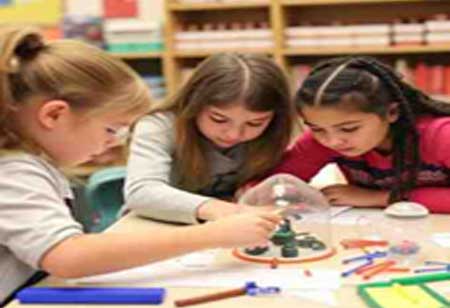THANK YOU FOR SUBSCRIBING
Be first to read the latest tech news, Industry Leader's Insights, and CIO interviews of medium and large enterprises exclusively from Education Technology Insights
A Role of Effective Learning in Reigniting Student Engagement
The decline in student engagement upon the return to in-person learning has become a pressing concern for educators, families, and policymakers alike.

By
Education Technology Insights | Wednesday, September 20, 2023
Stay ahead of the industry with exclusive feature stories on the top companies, expert insights and the latest news delivered straight to your inbox. Subscribe today.
Addressing declining student engagement, approach emphasises four pillars: Connections, Conditions, Challenge, and Control It empowers students and educators to create a more engaging and meaningful learning experience.
FREMONT, CA: The decline in student engagement upon the return to in-person learning has become a pressing concern for educators, families, and policymakers alike. The digital distractions have led to growing apprehension among teachers, who are increasingly troubled by their students' waning focus and enthusiasm. An eye-opening poll of 1,400 teachers spanning grades 4–12 revealed that a staggering 80 per cent expressed profound concerns about the level of engagement exhibited by their students.
It is imperative to recognise that the challenges associated with student engagement have persisted long before the pandemic. The root of the issue often lies in how one measures engagement. Behavioural engagement, encompassing factors such as attentiveness and task completion, often takes precedence over cognitive engagement, which signifies active interaction and engagement with the learning materials.
Genuine engagement transcends the certain observance of signs of attentiveness; it involves active participation and interaction by the students themselves. To cultivate this form of engagement, we propose a holistic approach encapsulated by the four C's: connections, conditions, challenge, and control.
The first cornerstone is connections, which serve as the bedrock for engagement. The establishment of positive teacher-student relationships is paramount in nurturing engagement. Teachers should embark on a campaign for relationships, engaging in meaningful conversations with students outside the classroom on a regular basis. Infusing the curriculum with relevance to students' lives is instrumental. This entails elucidating the significance of what they are learning and establishing meaningful links to their interests.
The second pillar is the creation of a high-expectations atmosphere. Teachers' expectations exert a profound influence on student performance. Educators who maintain high expectations set challenging goals, involve students in the goal-setting process and advocate for heterogeneous grouping. The provision of regular feedback and the cultivation of a warm classroom environment further hinder these expectations.
Challenge emerges as the third pillar, as it is essential to motivate students via policies that encourage persistence. Grading policies should serve as a source of motivation rather than a demoralising factor. To achieve this, it is recommended to segregate product and process criteria in grading, facilitating a more nuanced assessment of student performance. Affording students the opportunity to retake assessments upon completing relevant tasks fosters a sense of perseverance.
Control is granted to the students themselves. Encouraging the development of self-regulation skills is paramount, encompassing elements such as comprehending their learning progress, setting goals, and actively seeking feedback. Empowering students to make choices in their learning journey not only enhances their engagement but also bolsters their self-confidence.
The path to enhancing student engagement calls for a paradigm shift from measuring passive behaviours to actively nurturing involvement in the learning process. By adopting a comprehensive approach that prioritises connections, conditions, challenge, and control, educators can cultivate an environment where students are not just engaged but also passionate about their learning experiences. The time has come to elevate cognitive engagement and equip students with the tools to be active architects of their own education.







